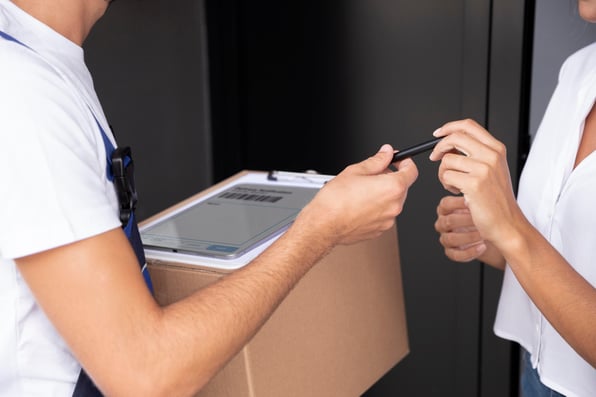
Introduction to Property Maintenance
Ciprian Chiripuci

When it comes to property ownership, there's more to it than simply purchasing a property and moving in. The investment comes with a range of responsibilities and one of them is property maintenance. Property maintenance is the process of taking care of a property to ensure that it's safe, functional and visually appealing. In this article, we will explore various aspects of property maintenance, why it's essential and how to go about it.
Why is Property Maintenance Important?
Property maintenance is essential for several reasons, including:
Safety
The safety of occupants is paramount when it comes to property ownership. Regular property maintenance can help identify and fix any potential hazards, such as electrical faults, gas leaks and faulty appliances, before they cause harm.
Compliance
Property owners have a legal obligation to ensure that their property complies with building codes and regulations. Neglecting maintenance can result in penalties, legal action or even closure of the property.
Property Value
Well-maintained properties tend to hold their value better than neglected ones. Regular maintenance helps to prevent issues from escalating, which can save the property owner money in the long run. Additionally, a well-maintained property can attract higher rental rates or sale prices.
Aesthetics
Maintaining a property can improve its visual appeal. A well-kept property can create a positive impression on tenants, visitors and potential buyers.
Types of Property Maintenance
There are two main types of property maintenance: preventive maintenance and corrective maintenance.
Preventive Maintenance
Preventive maintenance involves routine inspections, cleaning and repairs to prevent potential issues from occurring. It involves identifying and addressing minor issues before they become major problems. Some examples of preventive maintenance include:
- Regularly cleaning gutters and drains to prevent blockages and water damage.
- Servicing HVAC systems to ensure they are running efficiently and prevent costly repairs.
- Inspecting roofing regularly to identify and fix leaks before they cause significant damage.
- Regularly checking electrical systems to identify and fix any faults before they cause fires or other hazards.
Corrective Maintenance
Corrective maintenance involves addressing issues that have already occurred. It involves fixing or replacing faulty components to ensure the property is safe and functional. Some examples of corrective maintenance include:
- Replacing broken windows or doors.
- Fixing leaks in plumbing systems.
- Repairing damaged walls or floors.
- Replacing broken or faulty appliances.
How to Maintain Your Property
Maintaining your property can be overwhelming, but it doesn't have to be. Here are some tips to help you maintain your property:
Create a Maintenance Schedule
Create a maintenance schedule to ensure that you're addressing all the essential maintenance tasks. The schedule should include both preventive and corrective maintenance tasks and it should be based on the specific needs of your property. You can create a schedule using a spreadsheet or a dedicated property management software.
Prioritize Safety
Safety should be your top priority when it comes to property maintenance. Ensure that you regularly inspect your property for any potential hazards and fix them promptly. You should also ensure that you have functioning smoke detectors, carbon monoxide detectors and fire extinguishers.
Conduct Regular Inspections
Regular inspections can help you identify and address issues before they become major problems. You should conduct both internal and external inspections, including plumbing, electrical, roofing and HVAC systems. It's recommended to conduct these inspections at least once a year, but you can adjust the frequency based on the needs of your property.
Hire a Professional
Some property maintenance tasks require expertise from a professional. It's essential to hire a qualified and reputable professional to handle these tasks. Examples of tasks that require a professional include HVAC maintenance, plumbing repairs and electrical work.
Keep Records
Maintaining records of all maintenance activities can help you keep track of what has been done and what needs to be done. It can also help you identify patterns or trends in maintenance issues. You can keep records in a spreadsheet or a dedicated property management software.
Regularly Clean and Declutter
Regular cleaning and decluttering can improve aesthetics of your property and prevent pest infestations. You should clean the property regularly, including floors, walls, windows and appliances. Decluttering can help free up space and improve the flow of the property.
Regularly Check the Landscaping
The landscaping of your property can affect its visual appeal and safety. You should regularly check the landscaping for any potential hazards, such as overgrown trees or shrubs and fix them promptly. You should also maintain lawn and gardens regularly to prevent weed growth and maintain their visual appeal.
In summary, property maintenance is essential for the safety, compliance, value and aesthetics of a property. It involves both preventive and corrective maintenance tasks and it can be overwhelming to manage. However, by creating a maintenance schedule, prioritizing safety, conducting regular inspections, hiring a professional, keeping records, regularly cleaning and decluttering and regularly checking the landscaping, you can maintain your property effectively. By maintaining your property, you can protect your investment and provide a safe and functional living space for tenants or create an appealing property for potential buyers.
Related posts
Here are some resources to help you get more out of your assets


Ciprian Chiripuci
Truck Sealing in Delivery Logistics: Definition, Benefits and Best Practices

Ciprian Chiripuci
Mastering that Last Mile
READY TO TALK?